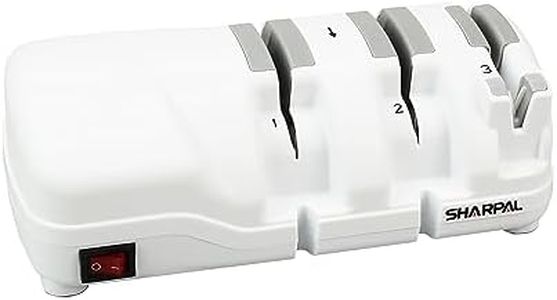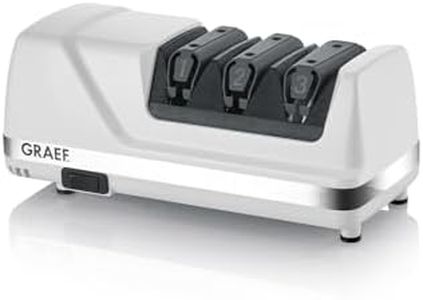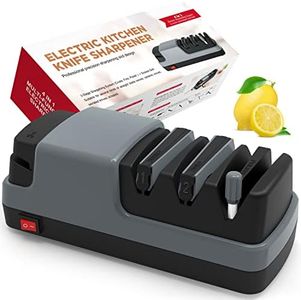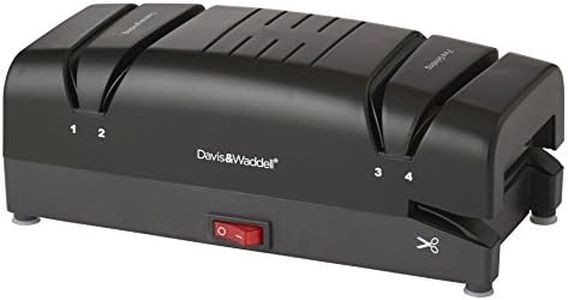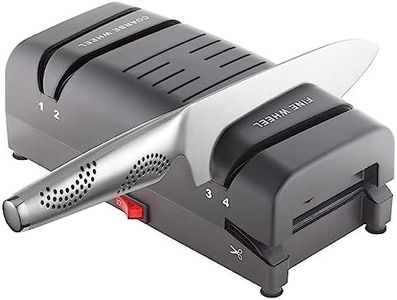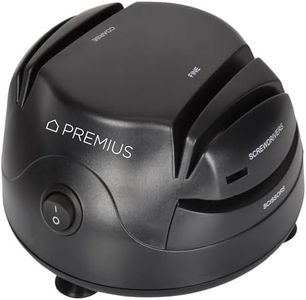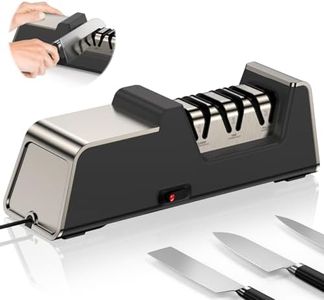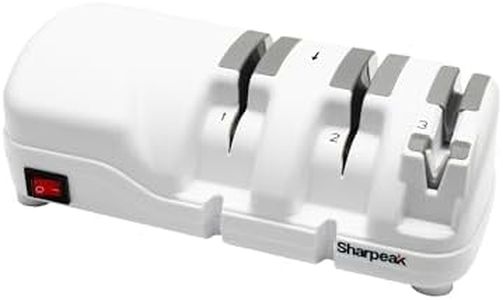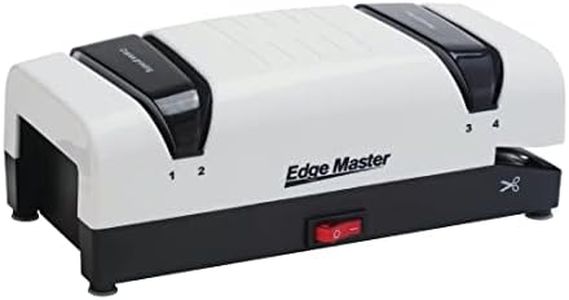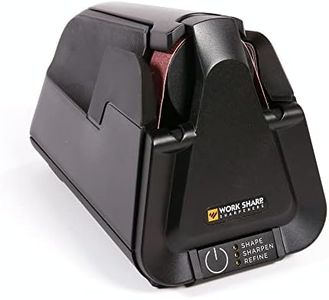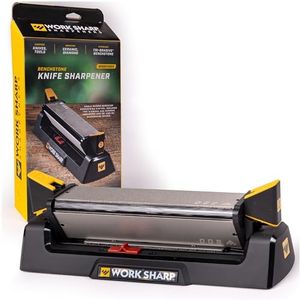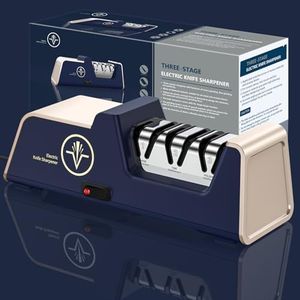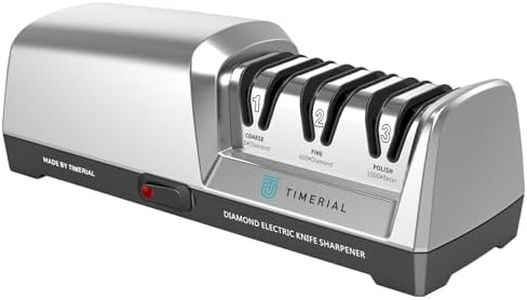We Use CookiesWe use cookies to enhance the security, performance,
functionality and for analytical and promotional activities. By continuing to browse this site you
are agreeing to our privacy policy
10 Best Electric Knife Sharpeners
From leading brands and best sellers available on the web.Buying Guide for the Best Electric Knife Sharpeners
Choosing an electric knife sharpener can greatly simplify the process of keeping your kitchen or utility knives in top shape, but it's important to pick a model that matches your needs. When shopping for one, consider what types of knives you use most often and how frequently you'll need to sharpen them. Knowing how to interpret the different features will help ensure that your sharpener is both effective and convenient for you. In general, think about how easy it is to use, how well it fits the space in your kitchen, and whether it can handle the knives you own.Number of StagesThe number of stages refers to how many sharpening steps the device offers—usually ranging from one to three. Each stage generally corresponds to a different sharpening function: coarse grinding for restoring dull edges, medium for everyday sharpening, and fine for honing and polishing the blade. Models with one stage are straightforward and fast, but may not give you the most refined result. Two-stage sharpeners balance sharpening and polishing for general use. Three-stage models provide the most control and the finest edge, making them ideal for those who value a razor-sharp finish. If you cook often or work with a range of knives, more stages can be very helpful.
Angle GuidesAngle guides help keep the knife at the correct sharpening angle, which is crucial for achieving a sharp and durable edge. Some sharpeners offer fixed angles, while others offer adjustable guides for different blade types. Fixed guides are convenient and foolproof if you stick to standard kitchen knives, but adjustable guides are better for those with specialty knives that require unique angles. Think about whether you plan to sharpen standard chef’s knives or also own knives like Japanese sushi or hunting knives that might need different angles.
Abrasive MaterialThe abrasive material in the sharpening wheels or belts determines how well the device can sharpen and how long it will last. Common materials include diamond, ceramic, and sapphirite. Diamond abrasives are very effective and work on a wide range of blade materials, making them a versatile option for most people. Ceramic abrasives are gentler and good for maintenance and fine honing. Sapphirite is another durable choice, but mainly found in certain brands. Consider the knives you own—hardened or high-quality steel may benefit from diamond abrasives, while softer steels or frequent maintenance can use ceramic.
Knife CompatibilityKnife compatibility refers to the types and sizes of knives you can safely and effectively sharpen with a particular device, including straight-edge, serrated, or specialty blades. Some models are designed mainly for standard straight-edged kitchen knives, while others can handle serrated bread knives, pocket knives, or even scissors. If you only use standard kitchen knives, a basic model suffices, but if you want versatility, make sure the sharpener lists compatibility with the types of knives you own.
Ease of Use and Safety FeaturesEase of use includes features like intuitive controls, stable non-slip bases, and clear guidance that make the sharpening process simple and safe. Safety features may include auto shut-off, blade guides that protect your hands, and casings that prevent accidental contact with moving parts. Beginners or those worried about safety should look for comprehensive safety features, while experienced users might prioritize efficiency and adjustability.
Size and StorageSize and storage refer to how much space the sharpener takes up and how easy it is to store when not in use. Larger models may have more features, but can take up valuable space on your kitchen counter or in cabinets. Compact models are good for small kitchens or for those who only sharpen occasionally. Think about how often you’ll use the sharpener and where you’ll keep it, so it doesn’t become a nuisance.
